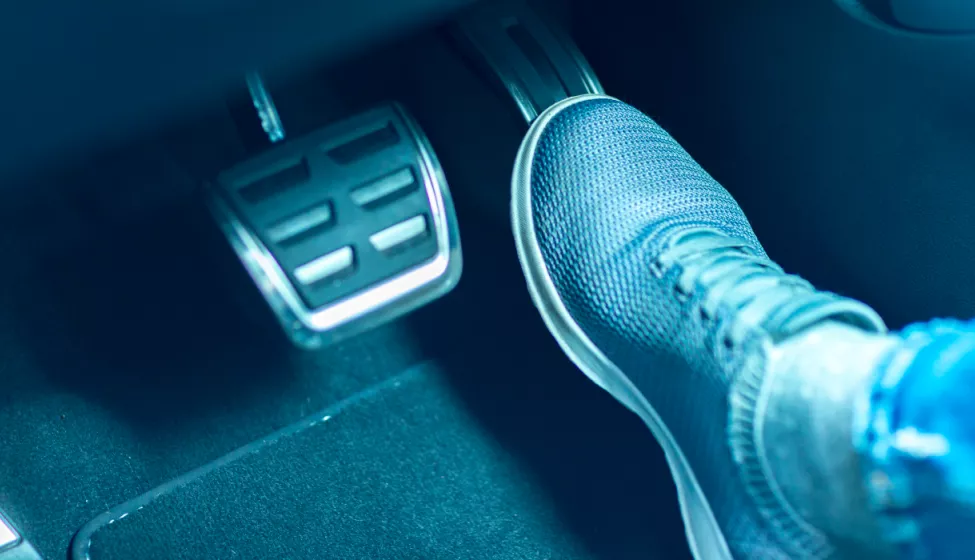March 28, 2017
Exponent scientists Drs. Sarah Sharpe, Caroline Crump, and Douglas Young recently co-authored, "Accelerator-to-Brake Pedal Transition Movements during On-Road Stopping in an Older Population," in SAE International.
Unintended acceleration events due to pedal misapplication have been shown to occur more frequently in older vs. younger drivers. While such occurrences are well documented, the nature of these movement errors is not well-characterized in common pedal error scenarios: namely, on-road, non-emergency stopping or slowing maneuvers. It is commonly assumed that drivers move in a ballistic or "direct hit" trajectory from the accelerator to the brake pedal. However, recent simulator studies show that drivers do not always move directly between pedals, with older drivers displaying more variable foot trajectories than younger drivers.
This study investigated pedal movement trajectories in older drivers ages 67.9 ± 5.2 years (7 males, 8 females) during on-road driving in response to variable traffic light conditions. Three different sedans and a pick-up truck were utilized. Pedal movements were recorded in response to traffic lights that turned yellow at four different vehicle-to-stop bar distances, or were red-on-approach (i.e. the light was red when it entered the driver's visual field). Pedal movements were grouped into four categories based on foot trajectory (ballistic, above-pedal hovering, pedal tapping, or between-pedal hesitation). At the shortest stopping distance (165 ft), drivers only utilized ballistic movements; at intermediate stopping distances (275 ft and 365 ft), drivers displayed other pedal movement behaviors including hovering and tapping, but continued to utilize a ballistic approach for the majority of the trials (approximately 76%); at long stopping distances (500 ft and red-on-approach) drivers utilized hovering, pedal tapping, and between-pedal hesitation behaviors more frequently (in approximately 48% of trials). Such non-ballistic approaches to pedal transitions could lead to an increased incidence of pedal misapplication. Our findings imply that more long duration braking scenarios may predispose drivers to pedal errors, as more variability is observed when long duration braking is available as an option.
Click here to read more.

